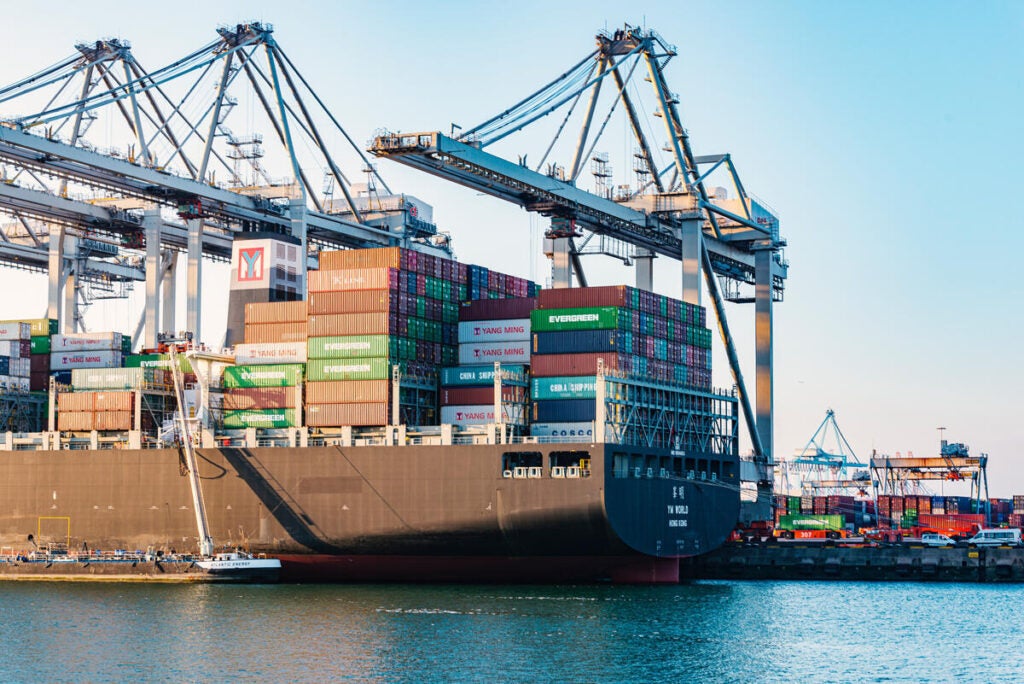America’s ports are hotbeds for toxic air pollution due to the diesel-powered ships and port vehicles that move our goods from sea to land. This pollution causes all kinds of health problems for nearby communities — from asthma and lung disease, to premature birth and death — which is why today’s announcement from the Environmental Protection Agency is so important.
The nearly $3 billion in grants through the Clean Ports Program will fund 55 zero-emission port equipment, infrastructure and planning projects across the country. The funding will enable transformational contributions to ports’ efforts to combat climate change and improve air quality for near-port communities and is an important step towards our broader work of moving towards a zero-emissions future.
EPA announces recipients of monumental funding to clean up America’s ports Share on XThe amount of funding earmarked for clean vehicle and infrastructure projects is impressive, and includes 15 shorepower projects, nine drayage truck projects, 21 cargo-handling-equipment projects and nine rail projects. For example:
- Port of New York and New Jersey will receive $344 million for and a significant drayage truck program.
- Port of Oakland and the Port of Maryland will both receive funding ($322 million and $145 million respectively) for cargo handling equipment, drayage trucks, charging infrastructure and battery energy storage systems.
- Port of Corpus Christi will receive $105 million for electric cargo handling equipment, locomotives and vessels, as well as funds to deploy charging infrastructure for vessel shore power.
In addition to providing comments throughout the development of the grant, EDF offered letters of support for projects that received funding in Maryland, New York, New Jersey, Florida and Texas — all a part of our long-standing commitment to cleaning up America’s ports. In early 2024, EDF released the report, Practical Pathways for Port Decarbonization and Environmental Justice, which offered best practices for net zero-aligned activity and suggested measurements for implementation and accountability.
As we noted in that report, there is an unmistakable urgency to decarbonize American ports as quickly and effectively as possible. People of color and low-income communities are disproportionally impacted by pollution and its resulting health impacts. There is a dire need for both improved climate change planning as well as a meaningful investment in zero-emission technology in this area, which the Clean Ports Program funds should help with. These two priorities — rapid implementation and deployment of zero-emission freight and ferry, and long-term planning for climate action plans and climate resiliency — need to move together.
Fortunately, the EPA’s Clean Ports Program will make real progress on both the implementation and planning for a zero-emission future. As the EPA noted in their announcement, funding from the grant that will go towards zero-emission freight and ferry technology would eliminate “more than 3 million metric tons of carbon pollution, equivalent to 391,220 homes’ energy use for one year.” The vast majority of those benefits will be realized in frontline communities.
The announcement is proof that the United States has the tools we need to move ports towards zero-emissions. Whatever happens in the weeks and months ahead, ports must remain ground zero for our commitment to cleaner air for the future. The awards are meaningful, but they are only a small percentage of what we need to achieve — that much can be seen in the nearly $5 billion in applications that went unfunded in this round. Ports like the Port of Houston that received meaningful planning grant funds will still need substantial grant dollars in the years ahead
Coordinating among ports, companies, communities and Congress will be critical in the years ahead. The Clean Ports Program was a one-time grant; but the demand from ports, as well as the climate urgency in communities across the country, sends a clear signal that we need a greater, sustained effort to build from the progress this first round of funding will deliver.
In the months ahead, EDF will continue coordinating with stakeholders from every sector to ensure the benefits for frontline communities at U.S. ports remain top of mind in our collective work to clean our air and combat climate change.










